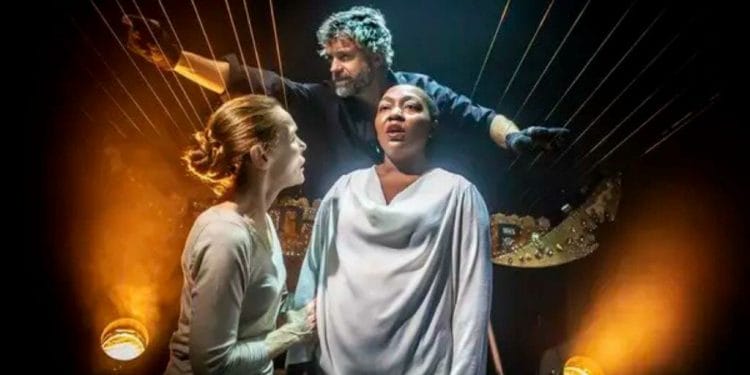 Ingar Bergman’s Persona is considered my many cinephiles to be one of the greatest films ever made, and while his other works such as Fanny and Alexander may be more widely known, it is Persona that is most often referred to for its merits in cinematography. Any stage adaptation therefore has a lot to live up to, not just for the script and performance, but for its staging and overall look.
Ingar Bergman’s Persona is considered my many cinephiles to be one of the greatest films ever made, and while his other works such as Fanny and Alexander may be more widely known, it is Persona that is most often referred to for its merits in cinematography. Any stage adaptation therefore has a lot to live up to, not just for the script and performance, but for its staging and overall look.
Paul Schoolman’s adaptation opens the new Riverside Studios theatre space in Hammersmith, the programme tells us that aside from the opening introduction (which isn’t entirely necessary) every word is taken from Bergman’s script. This includes stage directions or thoughts from Bergman on the psychological states of the characters.
Elizabet Vogel is a famous actress who suddenly stops speaking. At her Doctor’s beach house she is cared for by Nurse Alma who is slowly driven to the point of insanity by the one-sided conversations. Alma begins to reveal more and more of herself to Elizabet, but also starts to absorb Elizabet’s persona to the point that they become almost identical people, although this production never seems to fully hit that mark.
The music comes from The Earth Harp, played by William Close, who will be replaced by Catrin Meek for the second half of the run. Sitting to stage left, it’s wires quiver above the heads of the audience creating the most incredibly rich and vivid sounds, it’s like sitting in the sound booth of a horror movie with those eerily chilling sounds being created just for us.
While the music is certainly beautiful, and perhaps the most accomplished part of Persona, the actors are sometimes drowned out by it. They are already failing to project out and when faced with the competing music their words are completely lost. Director, Paul Schoolman as the narrator struggles most to compete with the harp, while Nobhule Mngcwengi rarely has to worry due to the few lines she actually speaks. Alice Krige plays Nurse Alma, and it is an accomplished and compelling performance.
The biggest issue comes from the set-up of the studio space. The audience seating is steep, with a shallow stage meeting the first row, this means that even from the sixth row it was impossible to see anything below waist height. This could have been mitigated in the direction, but almost every prop is on the floor and the actors spend significant periods sitting on the ground, meaning most of the audience will have missed large chunks of the action.
Fotini Dimou’s monochrome set, in a nod to the original black and white film, contains the necessary items to suggest we’re in a domestic setting, but it falls to P J McEvoy and Filip Haglund in the filmed projections to set the scene with looping video of rolling waves. Through this we lose the sense of confinement, and being trapped that Alma must have felt.
Persona is a somewhat underwhelming adaptation of a cinematic legend, in its translation to the stage it has lost the very thing that made it so revered, and only the haunting sounds of The Earth Harp and Alice Krige’s performance give any indication that this is in fact a psychological horror.

















